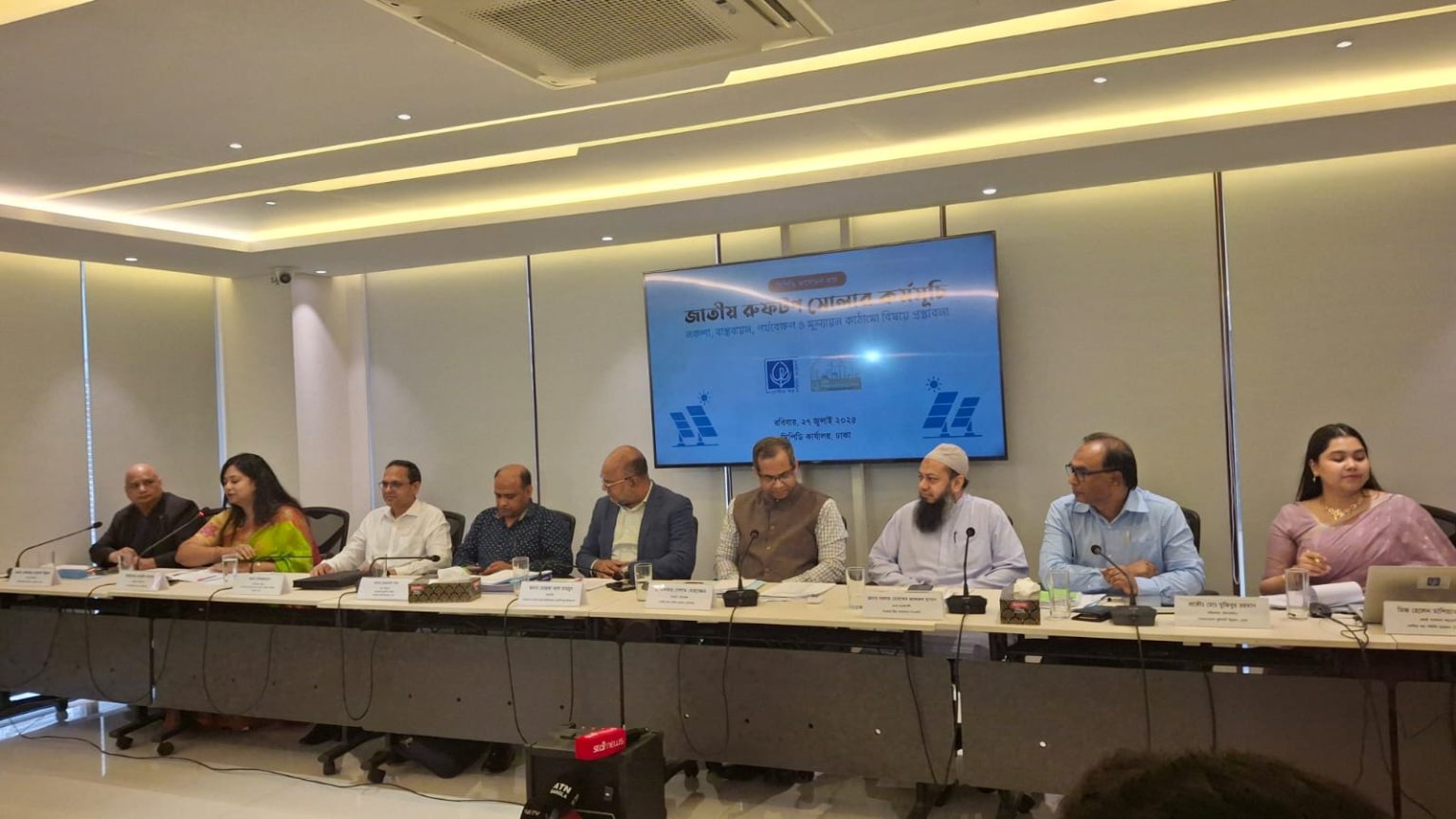Energy experts have welcomed the government’s national rooftop solar programme as a much-needed and progressive initiative. However, many are raising red flags about its execution timeline, calling the six-month target to generate 3,000 megawatts of solar electricity “unrealistic” given Bangladesh’s current technical, administrative, and infrastructural limitations.
The observations came at a discussion titled “National Rooftop Solar Programme: Framework for Design, Implementation, Monitoring and Evaluation”, jointly organised on Sunday in Dhanmondi, Dhaka by the Centre for Policy Dialogue (CPD) and the Bangladesh Solar and Renewable Energy Association (BSREA).
Dr Khondaker Golam Moazzem, Research Director at CPD, noted that past unplanned decisions have contributed to today’s energy crisis, prompting the current government to move toward renewable sources. While he appreciated the ambition, he warned that rushing into implementation, without sufficient experience, risks repeating past corruption and inefficiencies. As the programme is not directly under the Ministry of Power, Energy & Mineral Resources, Bangladesh, administrative and executional hurdles could also arise, he added.
Mustafa Al Mahmud, president of BSREA, echoed similar concerns. “The attempt to generate 3,000MW in six months may turn into another overambitious plan divorced from reality,” he said.
He also questioned why solar, despite falling costs, is not receiving a larger share of the power sector’s massive subsidies, which range between Tk 60,000–80,000 crore annually. If properly implemented, he argued, the programme could directly employ 100,000 people and impact 2–2.5 million jobs across the supply chain, including installers, wholesalers, and retailers. He recommended a Tk10,000 cash incentive for each kilowatt successfully installed and connected to the national grid by households.
Helen Mashiath Prioti, a research associate at CPD, pointed out that a previous policy requiring buildings to source at least 3% of their energy from renewables has yet to be enforced. She raised questions about whether uniform tariff rates will apply to all institutions or vary by category.
Engineer Nazrin Akter, director at SolarIC, shared a real-life example from Bogura, where a 25kW rooftop solar system was installed at a school. Only 10kW was enough to meet its power needs, with surplus electricity now being planned for redistribution to nearby institutions.
She emphasised that zero-investment and zero-carbon OPEX models can only succeed if payment security and usage guarantees are ensured. While CAPEX and OPEX models should both be kept open, OPEX may not always be viable for smaller projects. She also highlighted BSREA’s ongoing international training initiatives to build skilled technical manpower for the solar sector.
Sardar Mohammad Zaforullah Hasan, chief engineer at Power Grid Company of Bangladesh, warned that solar power, being variable and time-bound, can disrupt grid voltage and frequency. “A sudden injection of even 100–200MW can stress the system,” he said. To address this, a 135MW/135MWh Battery Energy Storage System (BESS) is already in progress, alongside other advanced grid upgrades. He also noted upcoming integration of nuclear power into the grid, requiring precise voltage and frequency management.
Khondker Morshed Millat of Bangladesh Bank said that a Tk 1,000 crore refinance scheme is currently in place, offering rooftop solar financing at a 5% interest rate. Additionally, the Tk 5,000 crore Green Transformation Fund (GTF), previously limited to export-oriented industries, is now open to local producers.
He proposed the need to strengthen internal banking capacity through targeted training, structured databases, and credit guarantee schemes. He also recommended extending the refinance tenure to 15–20 years and mandating net-metered electricity production, with reflections in utility bills.
Ramprasad Pal, deputy director at SREDA, reported that 113MW is currently being produced under net metering through 1,177 active rooftop connections. Companies like Ha-Meem, Hafez, and BSAR Group have already installed rooftop solar plants. Installation is also underway at educational and government institutions. He shared that rooftops of 8,364 schools could generate about 7,970MW, while 3,916 industrial rooftops could provide another 1,200MW. However, most government facilities use single-phase connections, making high-capacity intake impossible, underscoring the need to upgrade lines and assess costs early on.
Participants at the event unanimously called for a revision of the six-month target, suggesting it be extended at least until June or December. They also advocated for streamlined implementation of the 1% duty on solar batteries, improved data accuracy, strong monitoring, and wider training programmes to ensure long-term sustainability.


